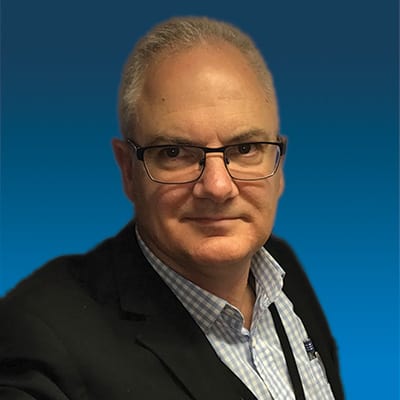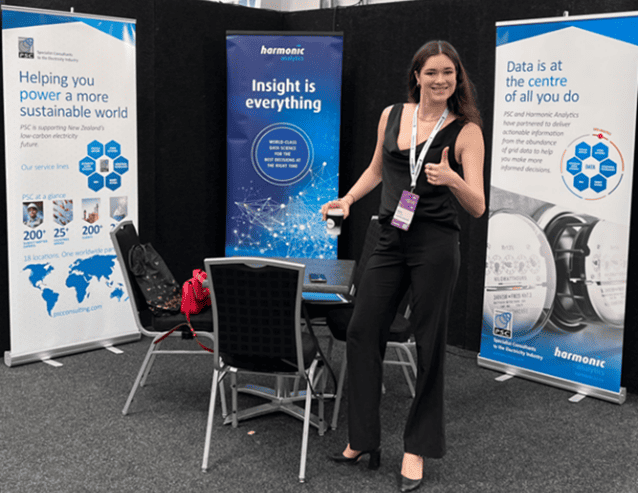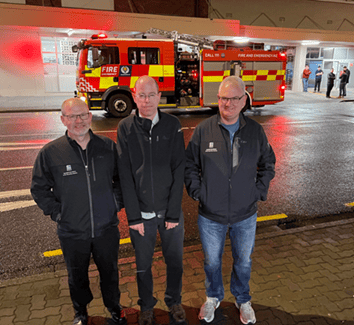
After a few years of lockdown, it was great to finally get to a conference specific to the Energy Industry in NZ, the EEA 2022 Conference. It was a well-run conference with lots of industry stalls and a large variety of professional presentations. The presentations ranged from the past and future of energy requirements in New Zealand (NZ) to controversial and contrarian ideas. These revolved around what was required to provide solutions to the issues of increasing energy demands, aging infrastructure and complications caused by the intermittent nature of renewable energies.
Pre-event excursion

Carrie Atkinson from PSC partner Harmonic Analytics welcomes attendees to our joint booth
For me, the event started with a bus ride to the Te Uku wind farm near Raglan, NZ. I had never seen a wind farm up close. This was almost not an exception as the weather did not cooperate. Low clouds and mist encumbered our view, however, that did not deter an excellent tour guide who explained the engineering aspects of wind farms to a bus full of electrical engineers.
It was interesting to note the simplification of technology that has created improvements in efficiency such as direct generation main drive systems, increases in scale, etc. I also did not realize that they can be purchased with internal lifts, which cost more but reduce costs by making it easier for engineers to access the main engine housing.
The value of good quality and regular maintenance cannot be understated to keep these technology behemoths highly productive and safe to operate.
Next was a bus ride back to the Claudelands Convention Centre, where we walked among various booths, including our PSC stand. On the first day, beyond networking, I listened to one of the presenters who gave an enterprising, if not controversial presentation on the history and potential future of energy sources in New Zealand. The presentation was thought-provoking, and contrarian, and seemed like a great start to the conference.
So much to do, so little time
Adding to the excitement on the first day, all the folks in our hotel were awoken at 2:30 am by a false fire alarm. So, off we went into the street until all was clear. Thankfully it was a mild night for an outdoor excursion. It could have been a lot worse.

PSC’s Peter Brown, Manu Hamblyn and Ray Young endure an early morning fire alarm
Later that morning, we were off to the conference. It was a challenge to balance the time between listening to interesting presentations, having impromptu meetings with various visitors to the stand, and also learning from some of the exhibitors about their technologies. In addition, we regularly had the opportunity to introduce PSC to those who didn’t know us and discuss various ways we could work together.
Our final day was much the same. One of the presentations was given by our New Zealand manager, Peter Brown, who talked about the challenges our industry is facing and his optimism about the future.
Final thoughts
It was evident from various EEA presentations that New Zealand needs to change and adapt to growing energy requirements in a world that no longer wants to tolerate the burning of carbon fuels. There is no single solution to a multifaceted problem, and it is no secret that New Zealand requires a large amount of new base energy generation and energy storage capability. Adding large intermittent renewable energy sources to a delicately balanced ecosystem of generation, transmission and distribution is a necessary part of the solution, but it will not be without its challenges. All I can think of is what an amazing time it will be for both new and established electrical engineers to make their mark in the development of New Zealand over the next 10 to 20 years.
